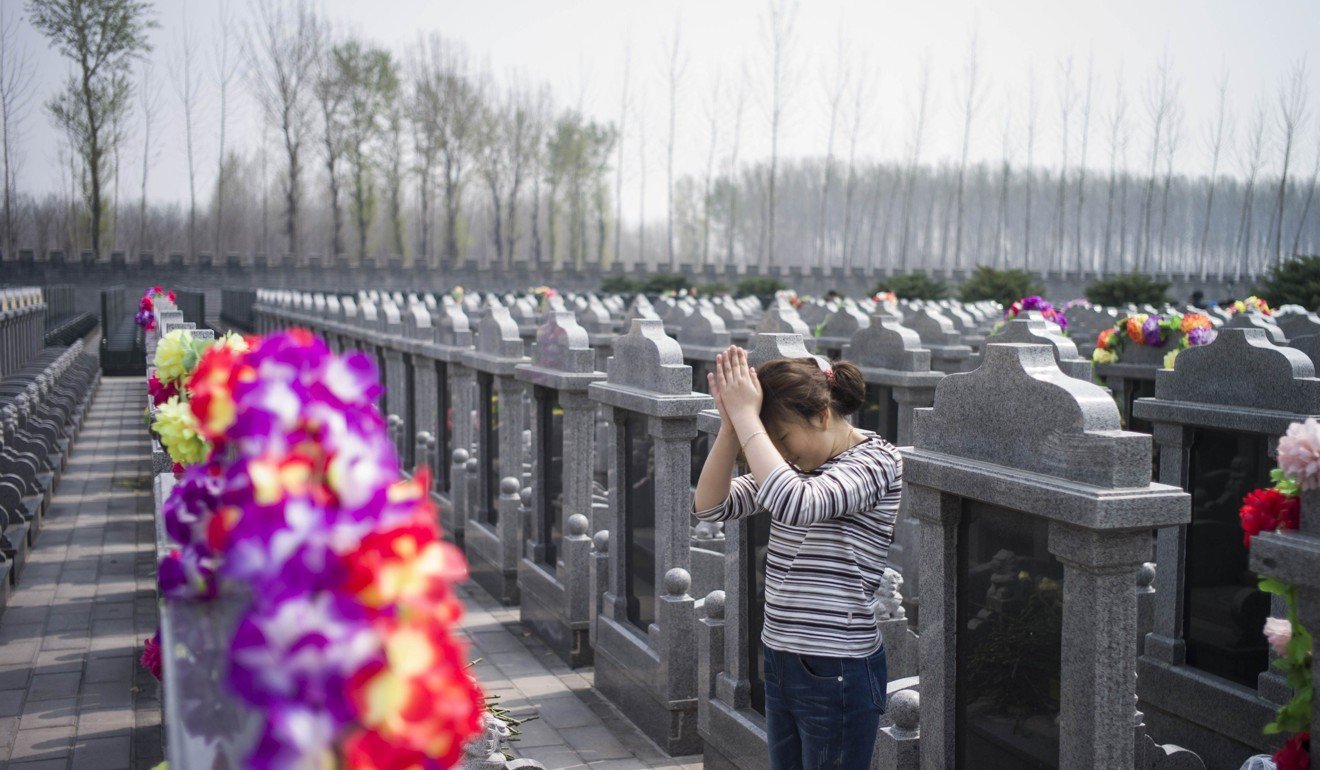
How Beijing is trying to curb the spiralling price of death in China
A lack of space in cities and an ageing population are pushing up the costs of laying the deceased to rest. Now the government is taking action
Dying can be an expensive business in China.
A shortage of space in big cities and an ageing population have combined to dramatically push up the cost of laying someone to rest.
Now the government has stepped in with new rules designed to curb the skyrocketing price of storing a loved one’s ashes after death. In some major cities, this has outpaced the growth in property prices.
The key change to existing rules is to limit the size of the small spaces known as “niches” where urns containing the ashes of the deceased are placed. The niches themselves are contained – often in their hundreds, or even thousands – within giant structures called columbariums, and remain the most popular choice for mainland Chinese as a final resting place.
It is a big social issue – the government has to carefully make plans to ensure that all the dead people will have a resting place
In developed cities like Shanghai, the cost of an average niche has jumped about 40 per cent since the first half of 2015 to more than 100,000 yuan (US$14,556) now. An official indicator that gauges home prices in 70 Chinese cities rose 23 per cent over the same period.
About 80 per cent of the city’s cemeteries ran out of space in 2015, and only about 10 of them have spaces available to buy now.
The existing 100-odd hectares of land reserved for cemeteries is expected to be used up in the next 20 years.
Professor Qiao Kuanyuan at the University of Shanghai for Science and Technology, who specialises in funeral studies, said the national authorities needed to make new rules to better use the limited land for graveyards and columbariums.
“It is a big social issue – the government has to carefully make plans to ensure that all the dead people will have a resting place,” he said. “The key lies in how to use land in a thrifty manner for the deceased people.”
In Nanjing, the capital of Jiangsu province, an average columbarium sports a price tag of about 30,000 yuan per niche, while in Beijing the cost is double that.
Chinese families tend to treat the niche as a kind of shrine they can visit, normally adorned with photographs of the deceased as well as flowers and keepsakes to keep their memory alive.
In early September, the Ministry of Civil Affairs unveiled a draft version of amended rules on funeral services, limiting the size of a single urn space to 0.5 square metres. Currently, an average niche takes up between 0.5 and 1 square metre.
Some high-end tombs containing a collection of family urns cover several square metres and cost as much as 500,000 yuan.
By limiting the size, the government is aiming to contain the surging prices.
As well as laying out the new measures, the ministry took the opportunity to reiterate existing regulations and warn wayward funeral operators to expect to be dealt with. It said it would strengthen supervision of construction and management of cemeteries and expel illegal operators.
In China, the sale of niches is tightly regulated and family members can only buy one from a licensed operator.
Pre-selling columbarium spaces to people who are still alive is not allowed, and the sites are also barred from changing hands on the secondary market.
But the existing regulations have not stopped unscrupulous operators from building columbariums without government approval to take advantage of the tight land supply and pocket illicit gains from selling tombs they built illegally.
And there are concerns about the effectiveness of the amended rules. Some analysts believe smaller niches will not be enough to tackle the problem of land shortage in the long term.
“A columbarium is still viewed by most Chinese as the best place for the deceased,” said Jiao Bing, chief execuitive of Focus Investment Management, who is a strong advocate for reforming the mainland’s funeral system. “Authorities need to educate the coming generations on how to use other means of burial to commemorate the deceased family members.”

“Their wishes need to be granted,” Jiao said. “But for the next generations when they become more educated, they will understand that a physical death site may not be necessary.”
In mainland China, celestial burial and burial of the dead in the ground are only allowed in designated areas such as remote rural areas that do not have cremation facilities.
The government is increasingly advocating sea burial and the construction of multi-storey columbariums to ease land crisis. However, alternatives to cremation are still not proving popular.
Wang Jisheng, president of Fu Shou Yuan International Group, the mainland’s largest publicly traded operator of cemeteries and funeral facilities, believes the new rules will help his business even though the company’s shares Hong Kong-listed shares tumbled 23.8 per cent to HK$5.12 (65 US cents) on September 10 when investors feared the impact they might have on the company’s performance.
“Strengthened regulation will edge out companies who do not comply with government rules,” he said. “Consolidation in the industry gives Fu Shou Yuan golden opportunities to grow faster and stay ahead of competition.”
Fu Shou Yuan’s shares have since rebounded 17.8 per cent to trade at HK$6.03 on Tuesday.
The firm posted net profits of 262 million yuan for the first six months of this year, up 14.6 per cent from a year ago. Revenue rose 2.5 per cent to 789 million yuan.
By the end of 2017, China had a population of 241 million people aged 60 or above, accounting for 17.3 per cent of the total.
Last year, 9.86 million people died, up 0.9 per cent from 2016.

